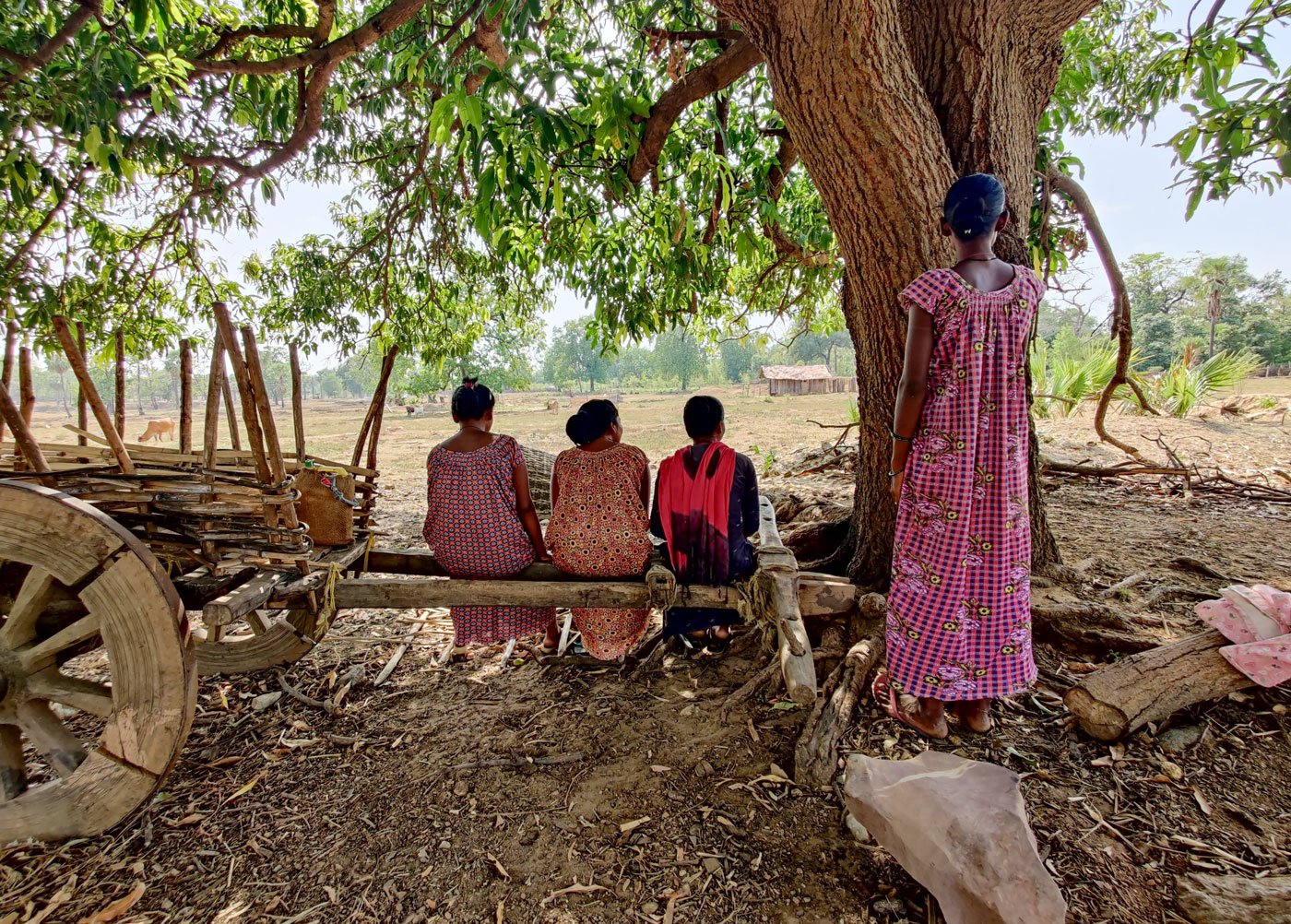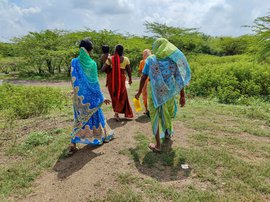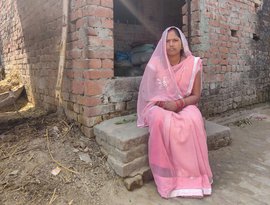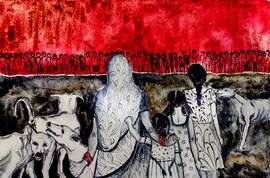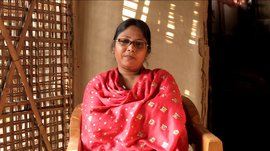Saru looks gloomy sitting under the mango tree outside her home. In her lap, her infant son is restless and babbling. “My periods will come any day now,” she says, “I will have to go to the kurma ghar then.” Literally ‘period hut’, the kurma ghar is where she’ll stay for 4-5 days when she menstruates.
The imminent event is troubling Saru (not her real name). “It is suffocating in the kurma ghar and I can't sleep at all, away from my children,” she says, trying to calm her nine-month-old son. She has a daughter too, Komal (not her real name), who is three-and-a-half years old and attends nursery school. “Her pali [menstrual cycle] will start someday; it frightens me,” says Saru, 30, anxious that her daughter would have to endure the traditional practice of their Madia tribe.
There are four kurma huts in Saru’s village – one less than 100 metres from her home. They are currently used by the 27 adolescent girls and women of menstruating age in the village. “I have grown up seeing my mother and her mother going to the kurma ghar . Now I am using it. I don't want Komal to suffer this system,” says Saru.
The Madia, an Adivasi tribe, consider menstruating women to be impure and untouchable, and send them away when they get their period. “I have been going to the kurma ghar since I was 13,” says Saru. She was at her parents’ home then, in a village about 50 kilometres from her current home in the eastern part of Gadchiroli district, Maharashtra.
In the last 18 years, Saru has spent close to 1,000 days of her life – about five days every month – in a hut with no bathroom, no running water, no electricity and no bed or a fan. “It is dark inside and the nights are scary. I feel as if the darkness will eat me up,” she says. “I feel like running fast towards my house and holding my kids tight, close to my chest…but I can’t."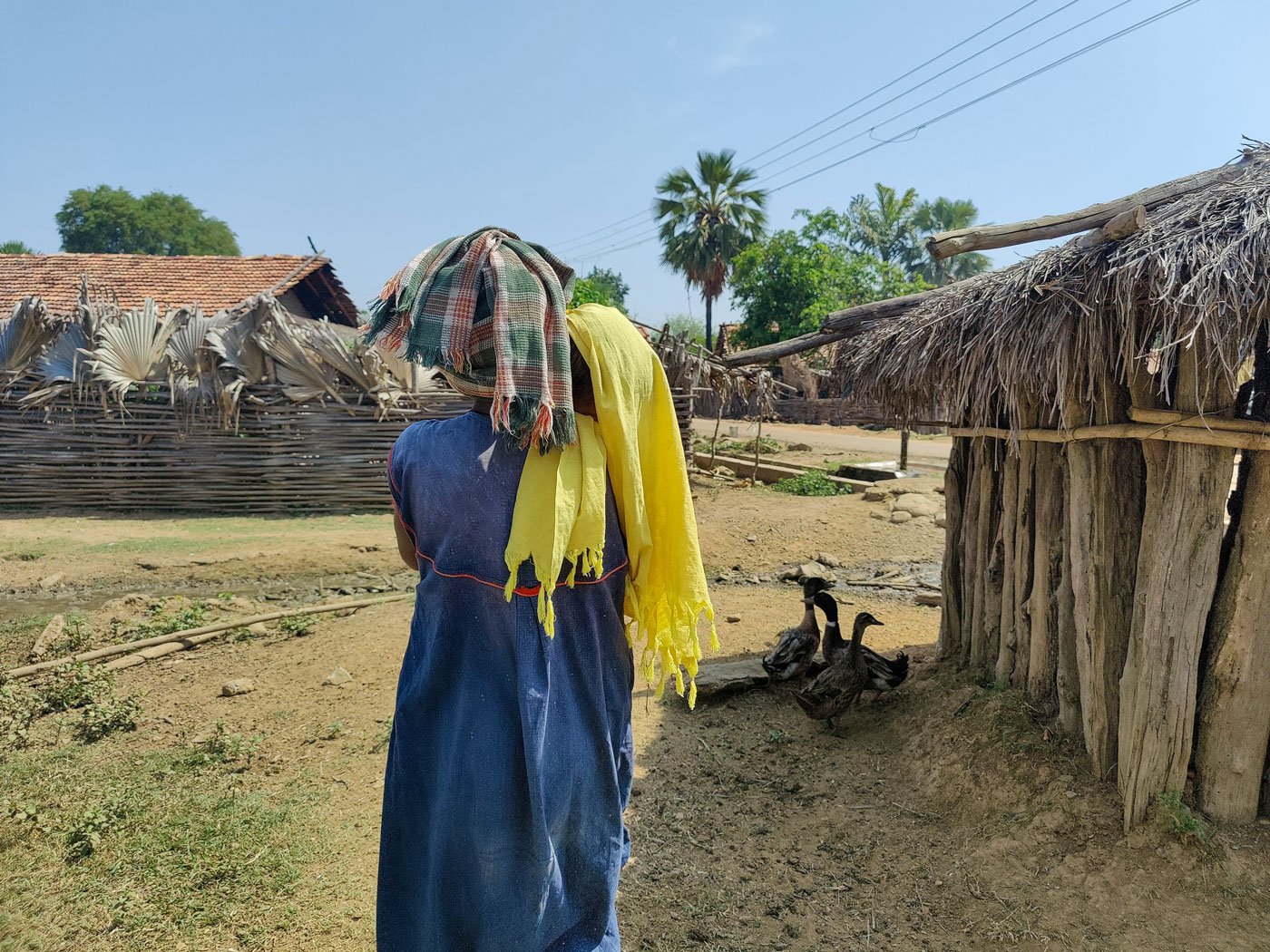
Saru tries to calm her restless son (under the yellow cloth) outside their home in east Gadchiroli, while she worries about having to go to the
kurma ghar
soon
Inside the kurma ghar – which is used by other women in her village too – Saru longs for a clean room, a soft bed to rest her aching body, and a blanket radiating the warmth of loved ones. But the dilapidated hut, made of mud walls and clay-tiled roofs supported by bamboo, is a depressing space. Even the floor – on which she must sleep – is uneven. “I sleep on a bedsheet they [husband or mother-in-law] send. I suffer from backache, headache and cramps. Sleeping on a thin sheet is not at all comfortable,” she says.
For Saru, the discomfort and pain is compounded by isolation and distress of being away from her children. “It hurts that even my close ones don’t understand my anguish,” she says.
An increase in psychological symptoms such as anxiety, stress and depression are consistent with pre-menstrual and menstrual phases in women, says Dr. Swati Deepak, a psychotherapist from Mumbai. “The severity differs from woman to woman. They could get worse without proper care,” she adds. It is important that women receive affection and care from their family at that time, says Dr. Deepak, as discrimination and isolation can be traumatic.
The Madia women are not even allowed to store their period cloth pads at home. “All of us leave them in the hut,” says Saru. Plastic bags filled with the cloth pieces made out of used petticoats are left in the kurma ghar – stuffed in the wall cracks or hung from the bamboo beam. “There are lizards and mice roaming around, and they sit on these pads.” The contaminated pads cause irritation and infection.
There is no window in the hut, and the lack of ventilation makes the cloth pads smell. “It gets worse in the rains,” Saru says. “I use [sanitary] pads during monsoon because cloth doesn’t dry properly,” she adds. Saru spends Rs. 90 on a pack of 20 pads, which lasts her two months.
The kurma ghar that she goes to is at least 20 years old. But it isn’t looked after by anyone. The bamboo frame of the roof is splitting and the mud walls are cracking. “So you can imagine how old this hut must be. No man is willing to repair this because it is contaminated by menstruating women,” says Saru. Any repairs would need to be done by the women itself.
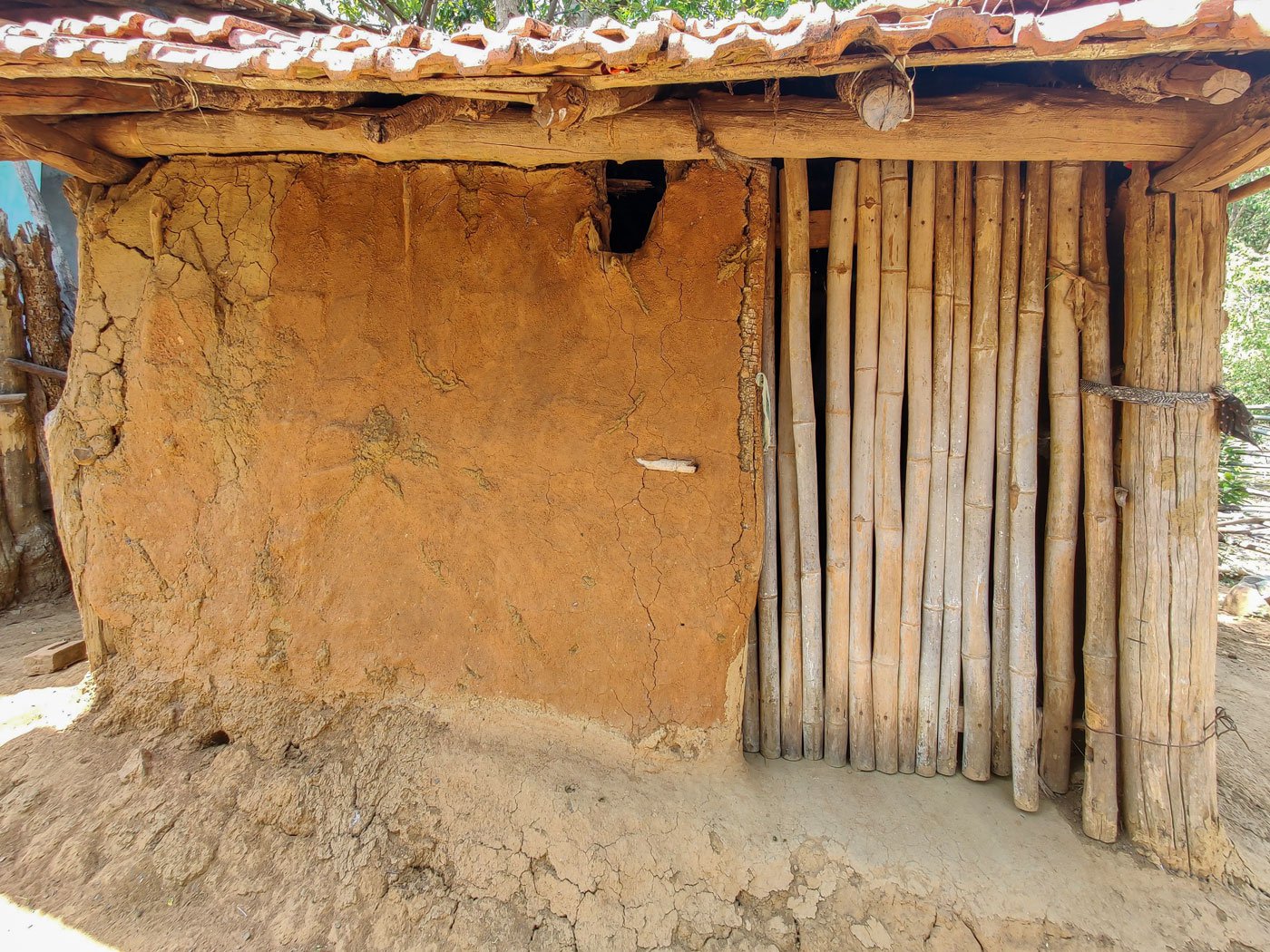
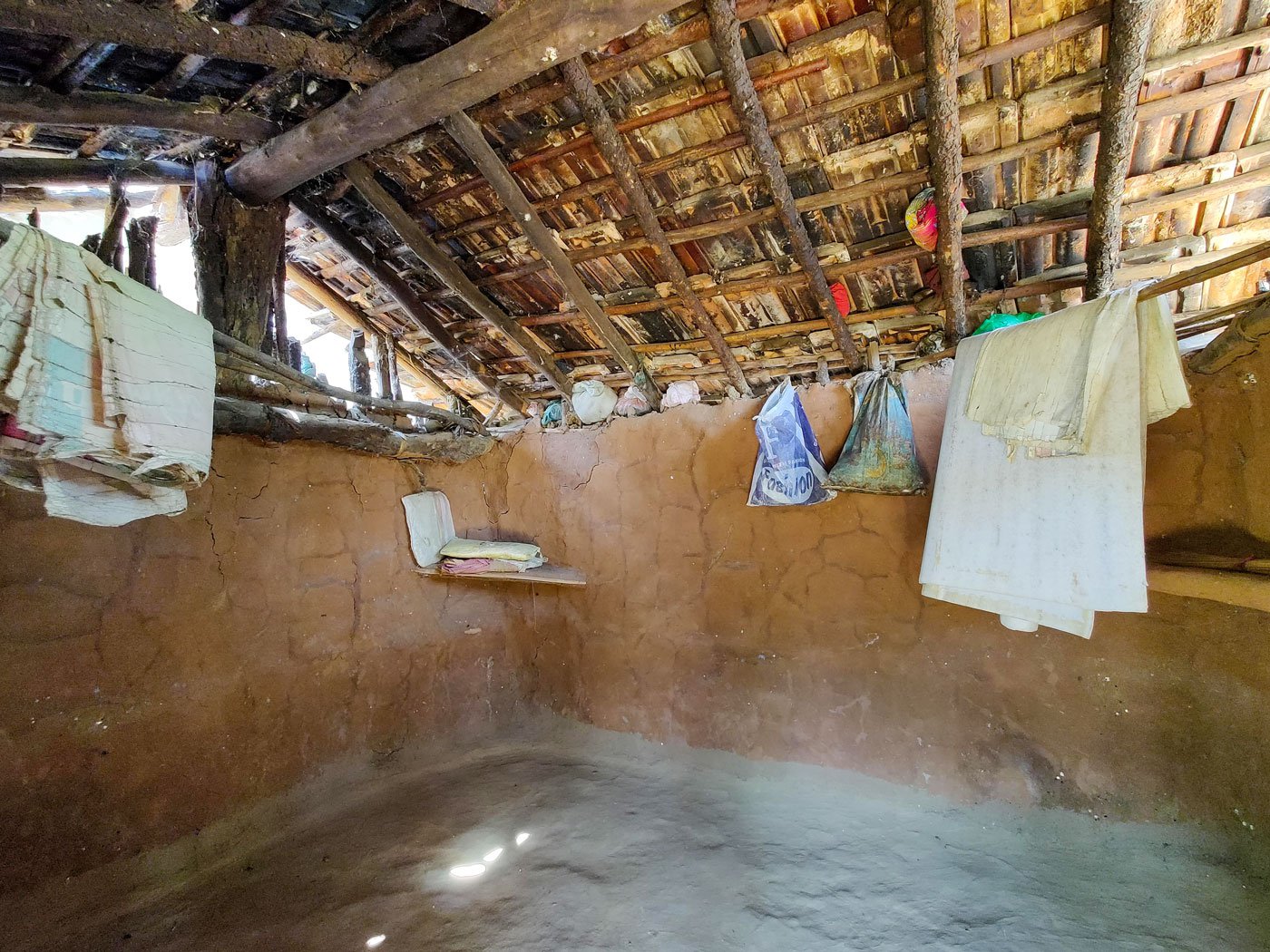
Left: The
kurma ghar
in Saru’s village where she spends her period days every month. Right: Saru and the others who use the hut leave their cloth pads there as they are not allowed to store those at home
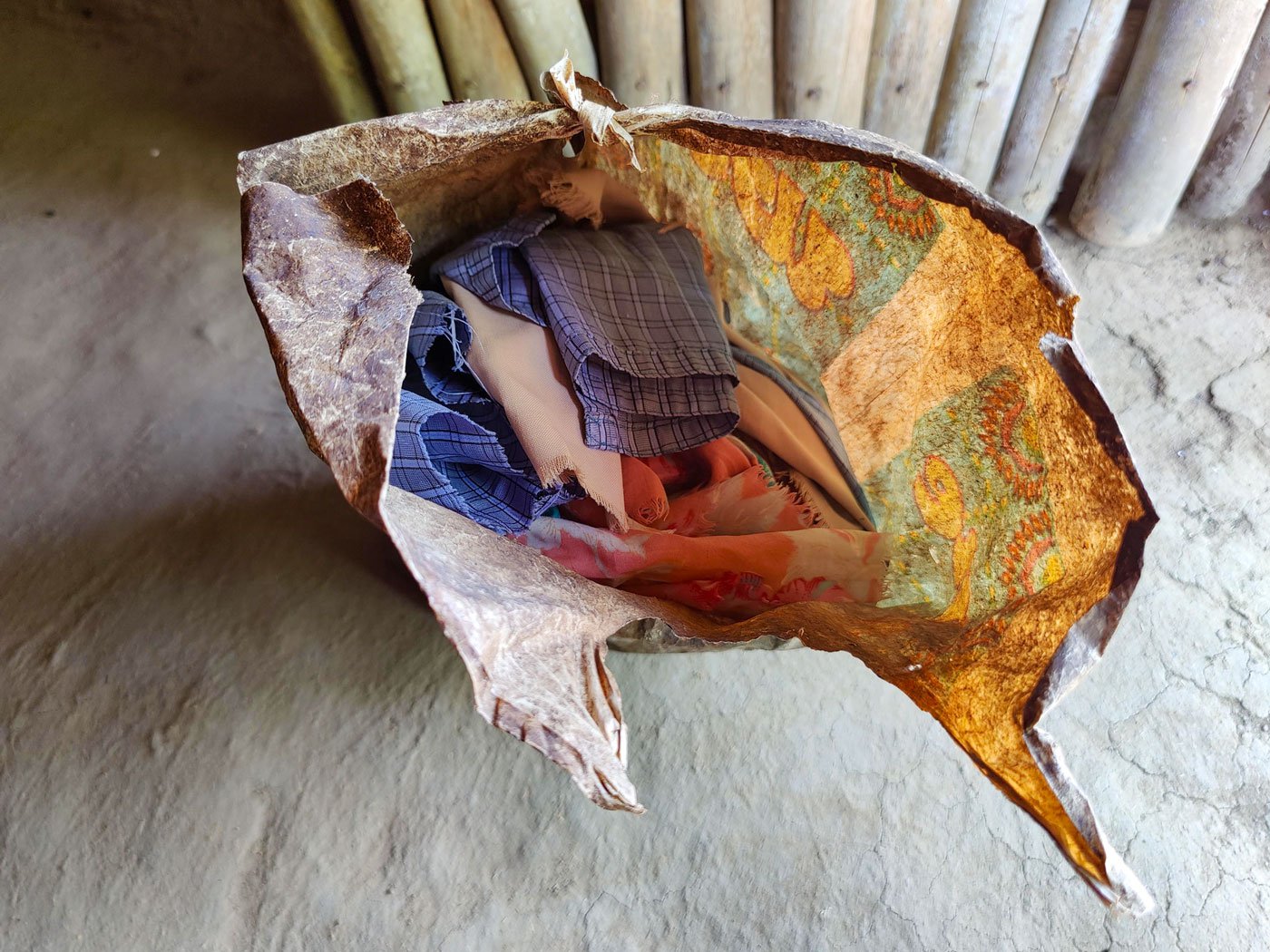
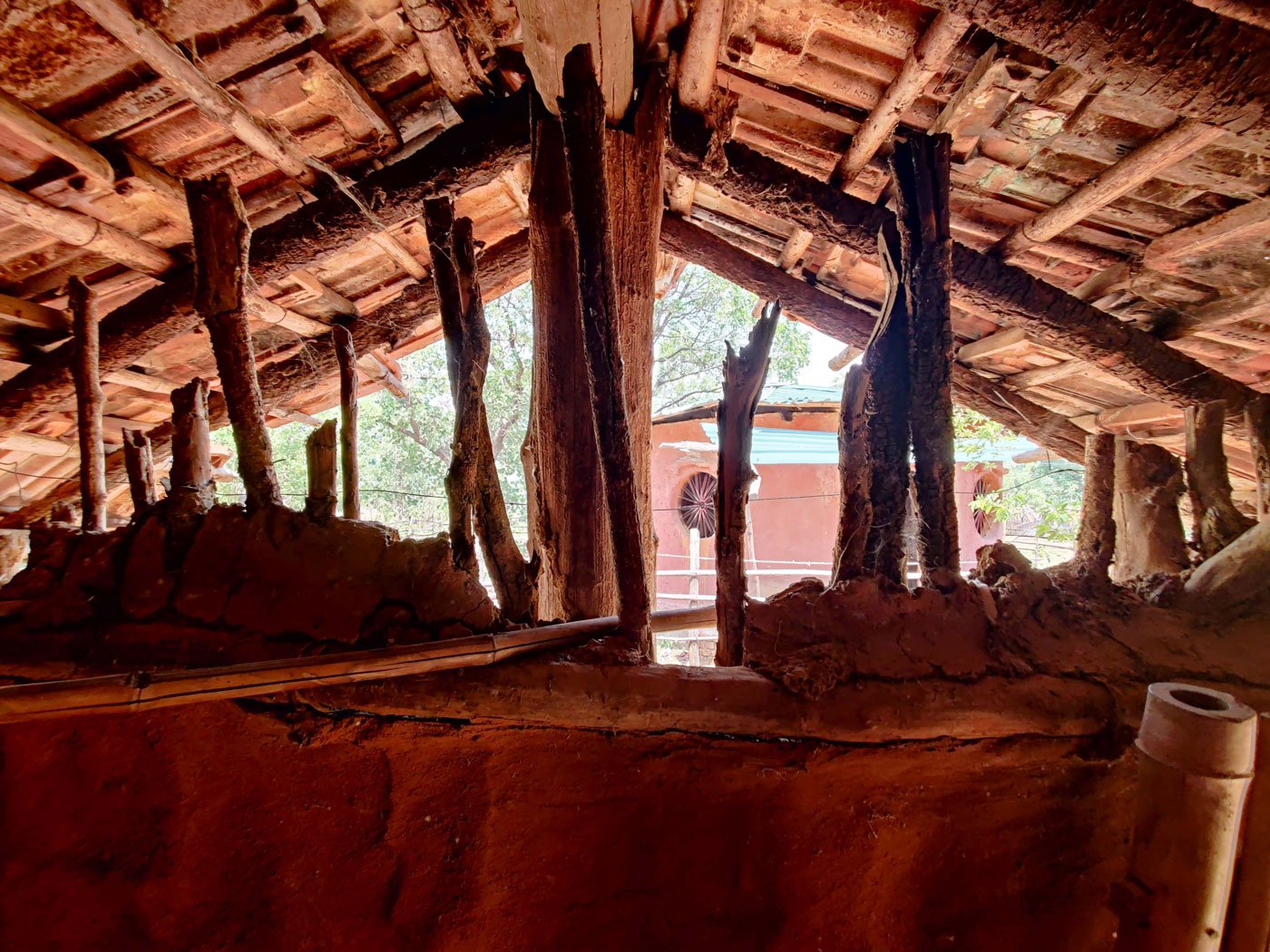
Left: A bag at the
kurma ghar
containing a woman’s cloth pads, to be used during her next stay there. Right: The hut in this village is over 20 years old and in a state of disrepair. It has no running water or a toilet
*****
Saru is not spared from menstrual segregation even though she is a public health worker – an Accredited Social Health Activist – since the last four years. “I am an ASHA worker, but over the years even I couldn’t change the mindsets of women and men here,” she says. Superstition about menstruation is the primary reason that people believe in the practice, Saru explains. “The older people say that it [menstruating women at home] will make the gramdevi angry, and the whole village would suffer under our god’s curse.” Her husband is a college graduate, “but even he supports the kurma system.”
The penalty for failing to practice kurma is a chicken or a goat, which is sacrificed to the village deity. Depending on the size, a goat could cost anywhere between Rs. 4,000-5,000, says Saru.
Ironically, though she can’t live at home when she has her period, Saru is expected to work in the family farm and graze the livestock during those days. The family owns two acres of rainfed farmland, where they cultivate paddy, the main crop of the district. “It isn’t as if I get rest. I work outside the home; it hurts,” she says. She calls it hypocrisy, “but what can be done to stop it? I don’t know.”
Through her ASHA work, Saru earns Rs. 2,000-2,500 per month. But, just like many other ASHA workers in the country, she does not receive her payment on time. Read: Caring for villages, in sickness and in health . “I get the money in my bank account after 3-4 months,” she says.
The practice is
taxing for Saru and others. The age-old
kurma
system is followed in most villages of Gadchiroli, which is one of the most
underdeveloped districts of the country. Adivasi communities, including the
Madia, make up 39 per cent of its population. Nearly 76 per cent of its land is
covered by forest, and in administrative terms the district is categorised as
‘backward’. Security forces heavily patrol the hilly region as the cadres of
banned Maoist groups are active here.
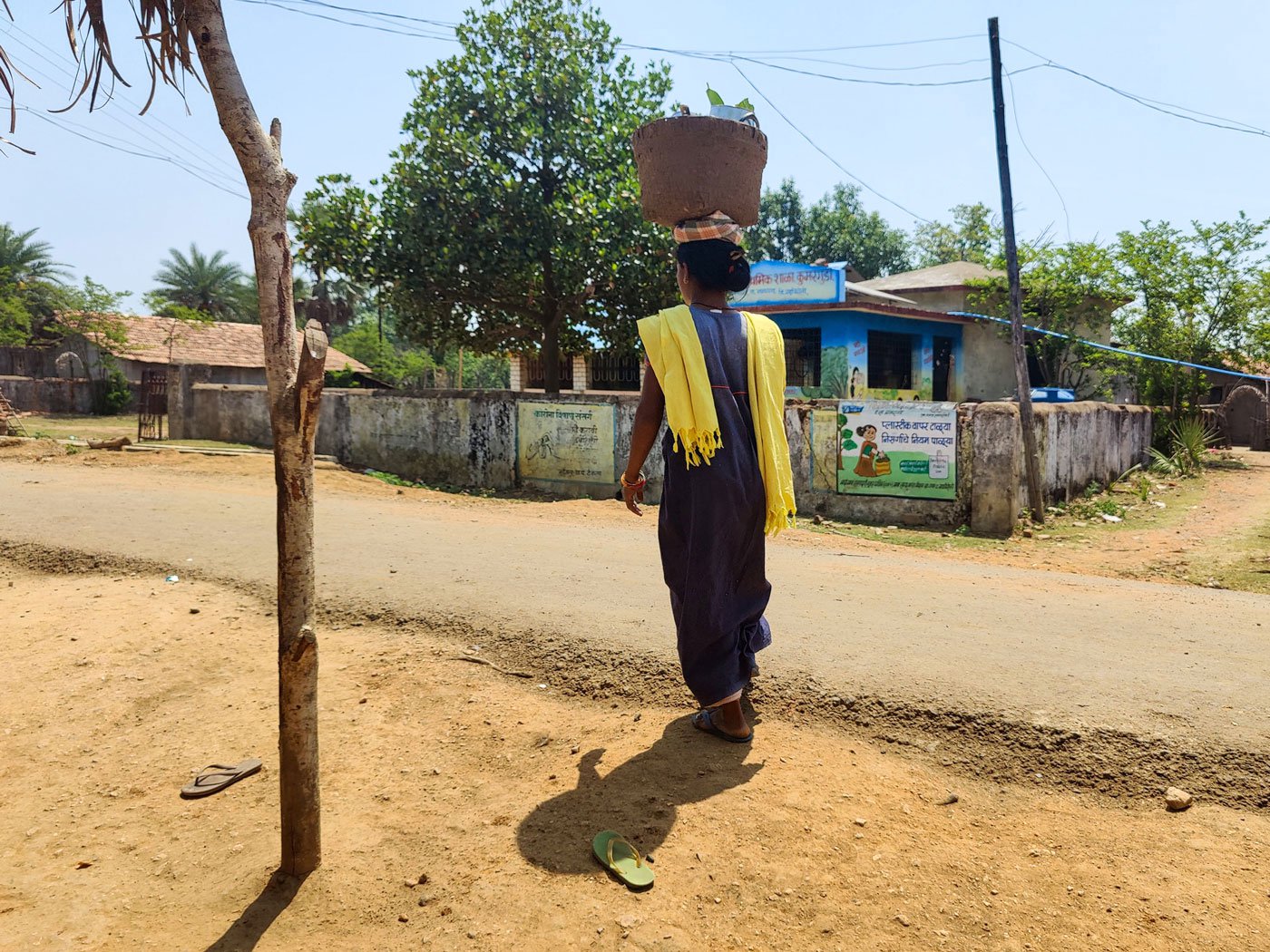
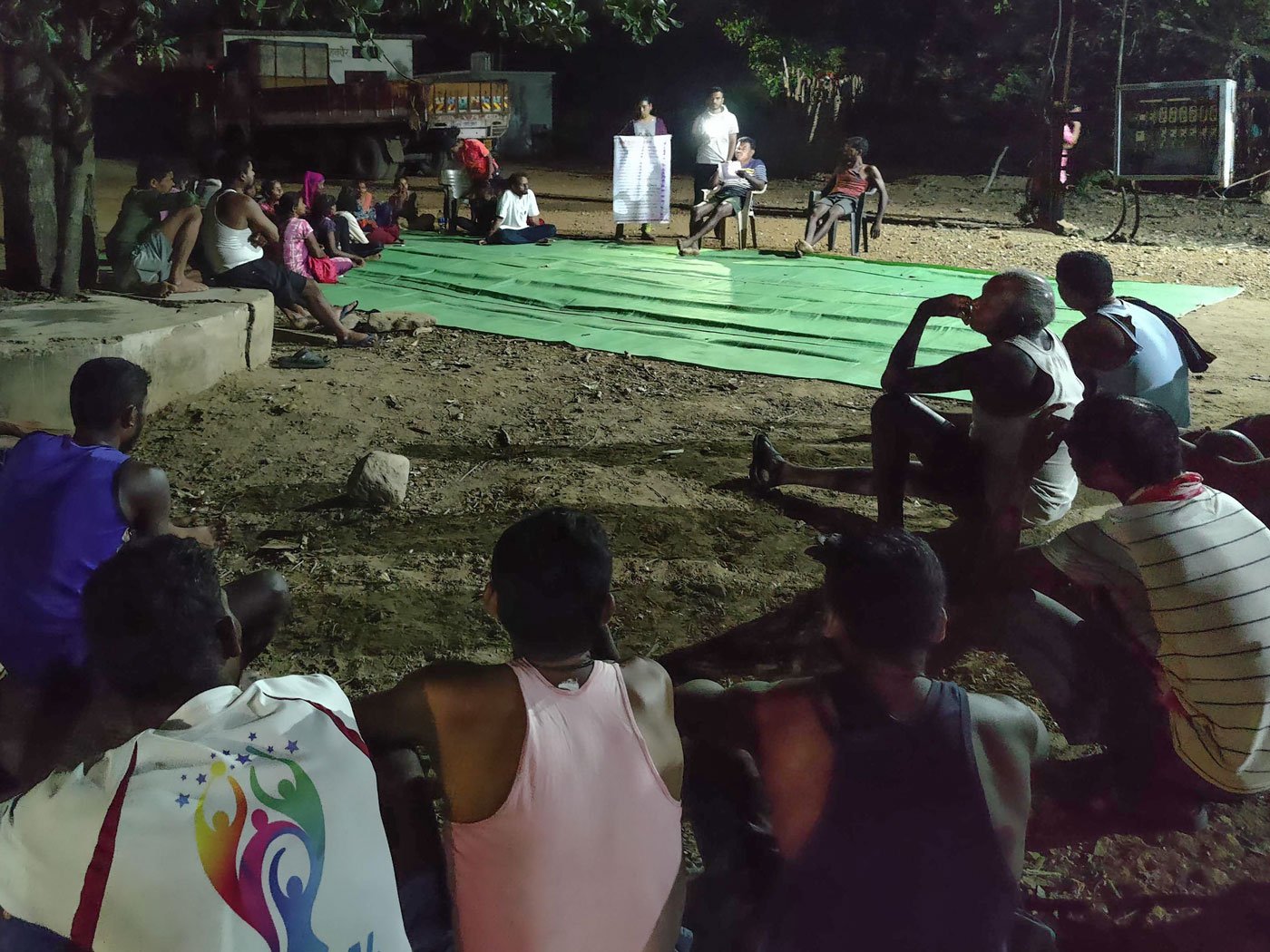
Left: In blistering summer heat, Saru carries lunch to her parents-in-law and husband working at the family farm. When she has her period, she is required to continue with her other tasks such as grazing the livestock. Right: A meeting organised by NGO Samajbandh in a village in Bhamragad
taluka
to create awareness about menstruation and hygiene care among the men and women
No available study of Gadchiroli documents the number of villages that practice the kurma system in the district. “We have been able to cover 20 villages where it is followed,” says Sachin Asha Subhash, founder of Samajbandh, a non-profit from Pune that has been working in Gadchiroli’s Bhamragad taluka since 2016. Samajbandh’s volunteers have been trying to create awareness among Adivasi women about the science of menstruation, hygiene care, and also educating older men and women about the risks to women’s health from the kurma huts.
It has been challenging, Sachin accepts. Their awareness drives and workshops have faced strong opposition. “It is not easy to tell them to stop the kurma system suddenly. They say, it is a part of their culture and outsiders shouldn’t interfere.” The team has been warned and threatened by influential men in the villages, such as the bhumiya and the perma , headman and head priest. “We try to sensitise them, because women have no say in any decision,” explains Sachin.
Over time, Sachin and his fellow volunteers convinced some bhumiyas to provide electricity, water, table fans and beds in the kurma huts. They also obtained their consent for the women to store their cloth pads at home, in sealed trunks. “Some bhumiya agreed to these in writing. But it will be a long time before they agree not to isolate women who don’t want to go to the kurma ghar ,” he says.
*****
In Bejur, Parvati is preparing her bed in a 10 x 10 foot kurma hut. “I don’t like staying here,” the 17-year-old says nervously. With 35 households and a little less than 200 people, Bejur is a small village in Bhamragad taluka . However, according to the women there, the village has nine period huts.
At night, a dim shaft of moonlight pouring in through a crack in the wall is Parvati’s only comfort when she stays in the kurma ghar . “I wake up suddenly in the middle of the night. Animal sounds from the forest scare me,” she says.
Her home, a well-built single-storey structure with running electricity, is less than 200 metres from the hut. “I feel safe in my house, not here. But my parents are afraid of taboo,” says Parvati, taking a long sigh. “There is no option. The men of the village are strict about these rules,” she says.
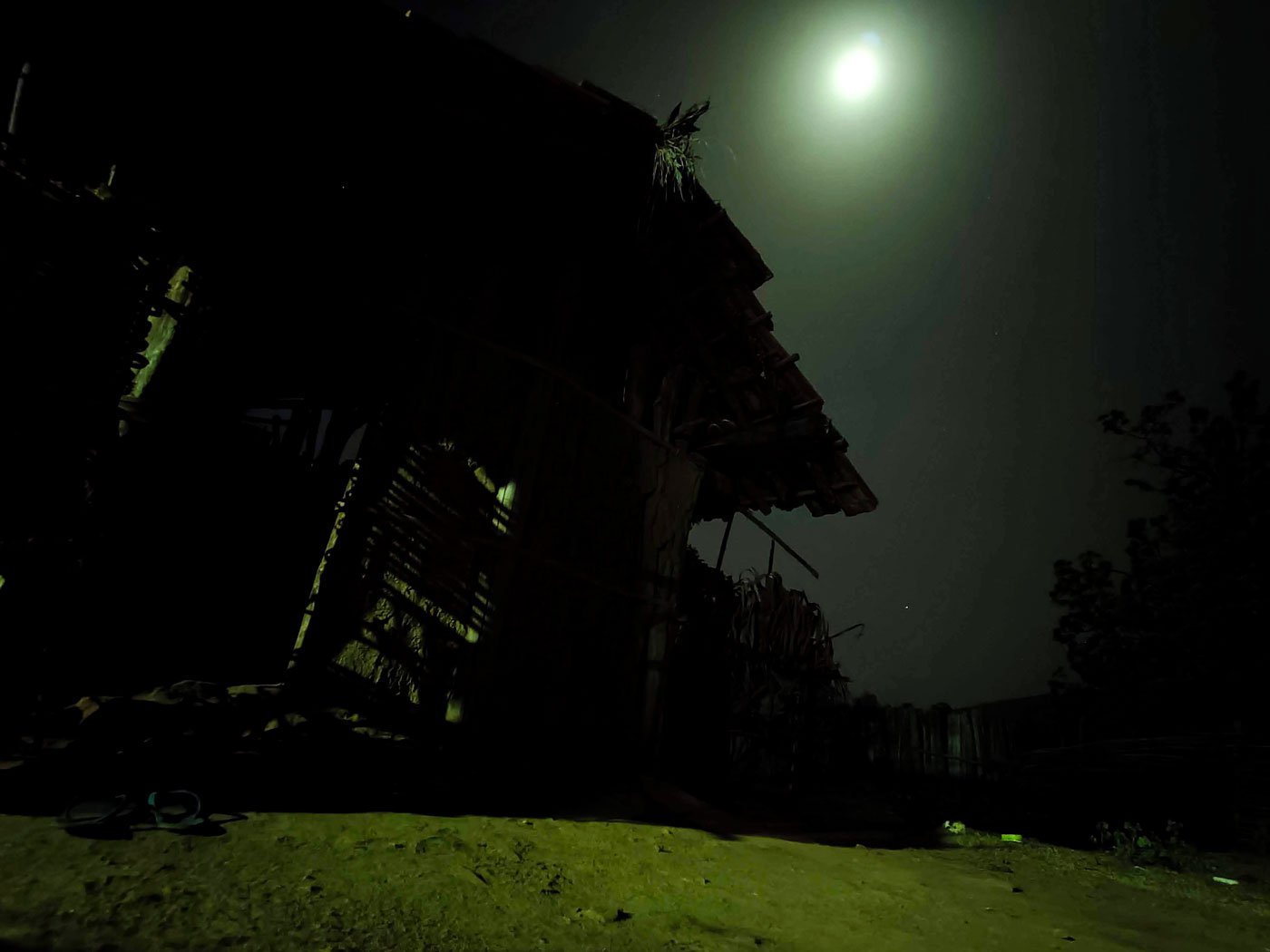
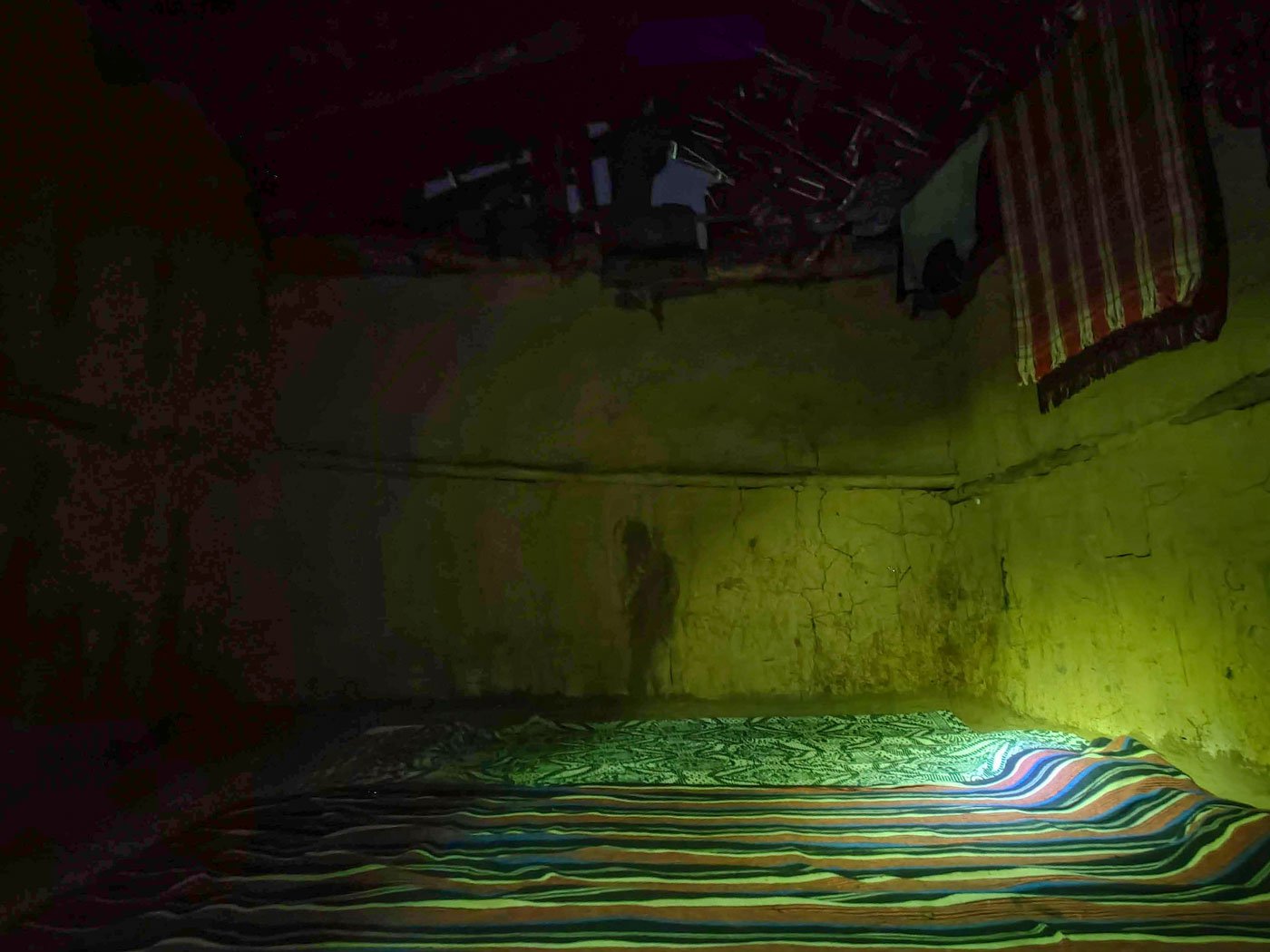
Left: The
kurma ghar
in Bejur village where Parvati spends her period days feels spooky at night. Right: The 10 x 10 foot hut, which has no electricity, is only lit by a beam of moonlight sometimes
Parvati is a student of Class 11 at Bhagwantrao Arts and Science College in Etapalli taluka of Gadchiroli, 50 kilometres from Bejur. She stays in a hostel there and comes home on holidays. “I don’t feel like coming back home,” she says. “It is extremely hot in the summer and I sweat all night in this small hut.”
Of the difficulties that women face in the kurma ghar , absence of toilets and lack of water are the toughest. Parvati has to go into the bushes behind the hut to relieve herself. “It is completely dark at night, and going alone doesn’t feel safe. During the day, we need to keep a watch on passers-by,” she says. Someone from Parvati’s home drops off a bucket of water for cleaning and washing. And drinking water is kept in a steel kalshi , pitcher. “But I can’t bathe,” she says.
She cooks her meals on a chulha , earthen stove, outside the hut. It isn’t easy to cook in the dark, she says. “At home, we mostly eat rice flavoured with red chilli powder and salt. Or goat meat, chicken, river fish…” Parvati lists the staple menu, which is the same during her periods – only, she has to cook it herself. “Separate utensils sent from home are used during those days,” says Parvati.
Communicating or interacting with friends, neighbours or family members is not permitted when in the kurma ghar . “I can’t step out from the hut in the daytime, or move around in the village, or talk to anyone,” Parvati says, narrating the list of restrictions.
*****
The practice of treating menstruating women as impure and secluding them has led to accidents and deaths in Bhamragad. “In the last five years, four women have died due to snake and scorpion bites during their stay in the kurma ghar ,” says R.S. Chavan, child development project officer (CDPO), Bhamragad. He represents the state’s Women and Child Development Department.
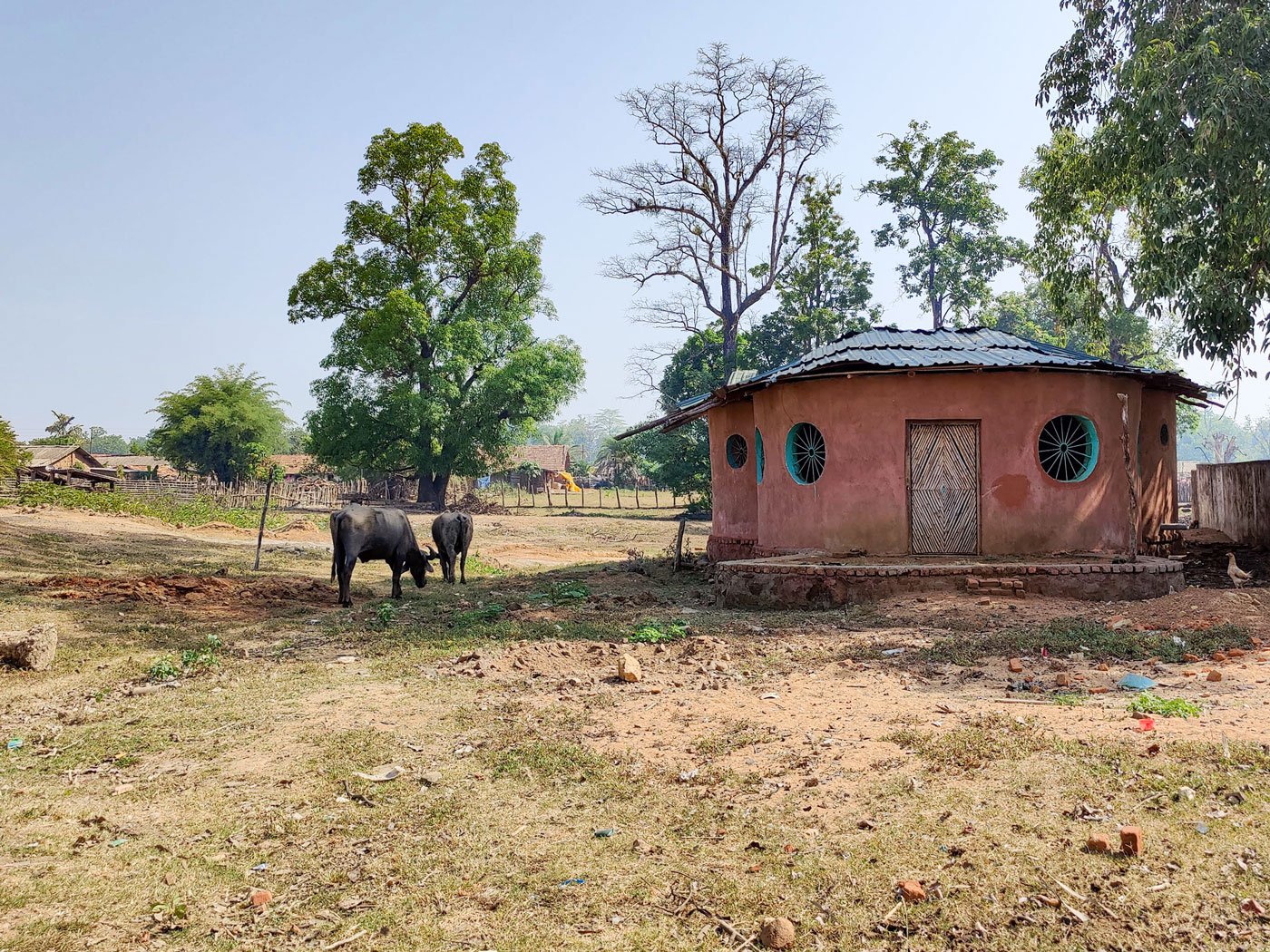
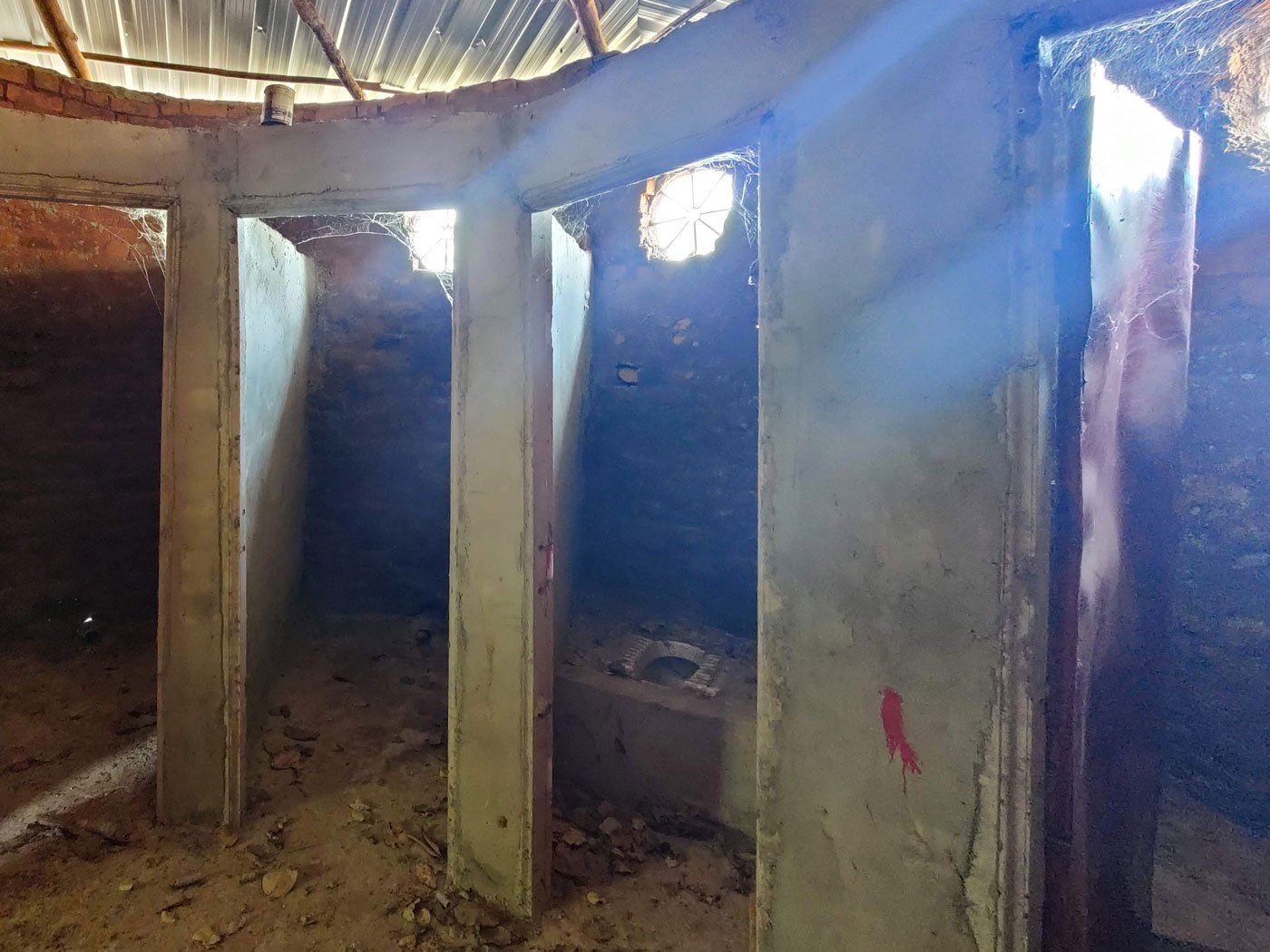
Left: A government-built period hut near Kumarguda village in Bhamragad taluka . Right: The circular shaped building is not inhabitable for women currently
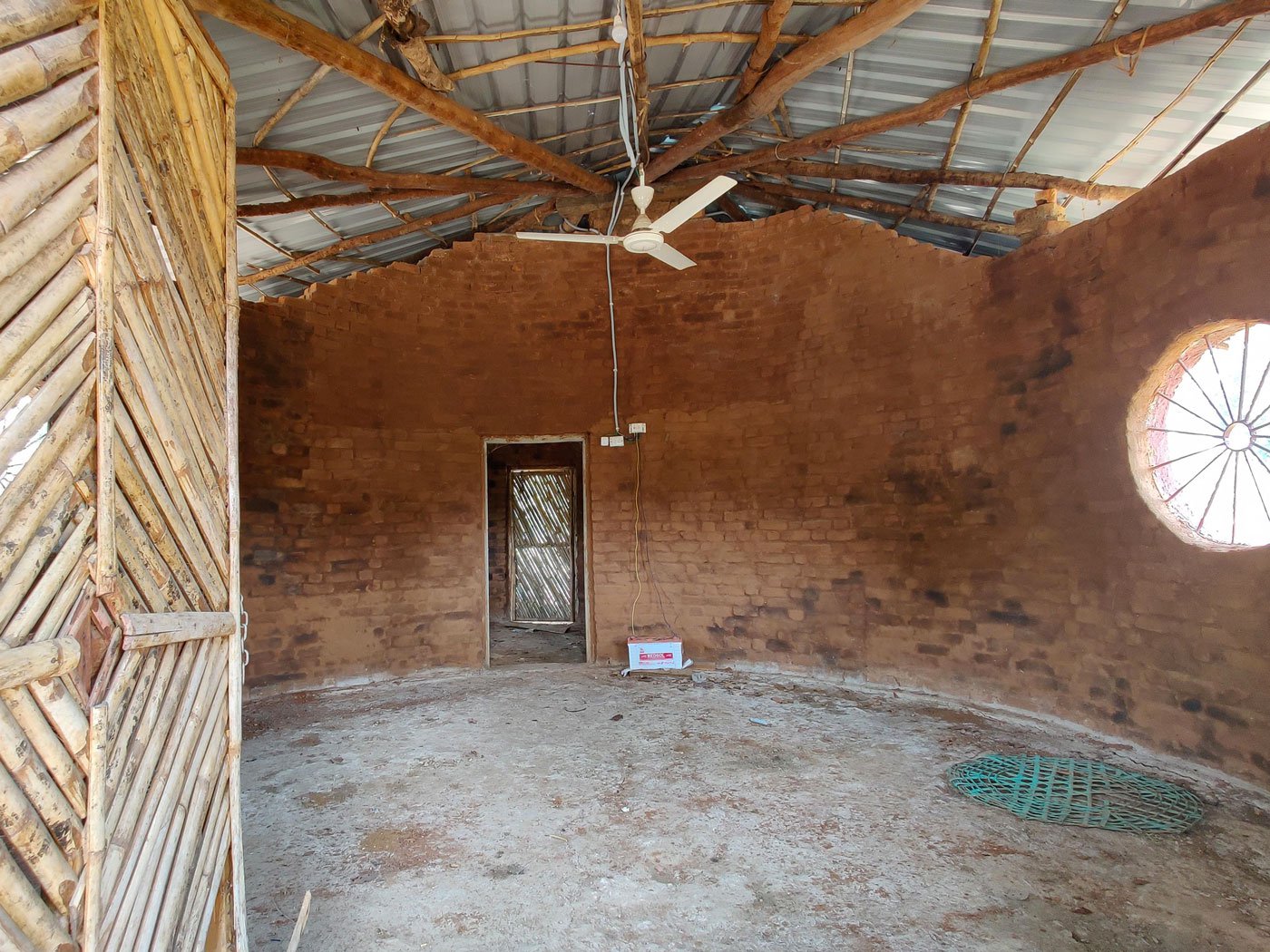
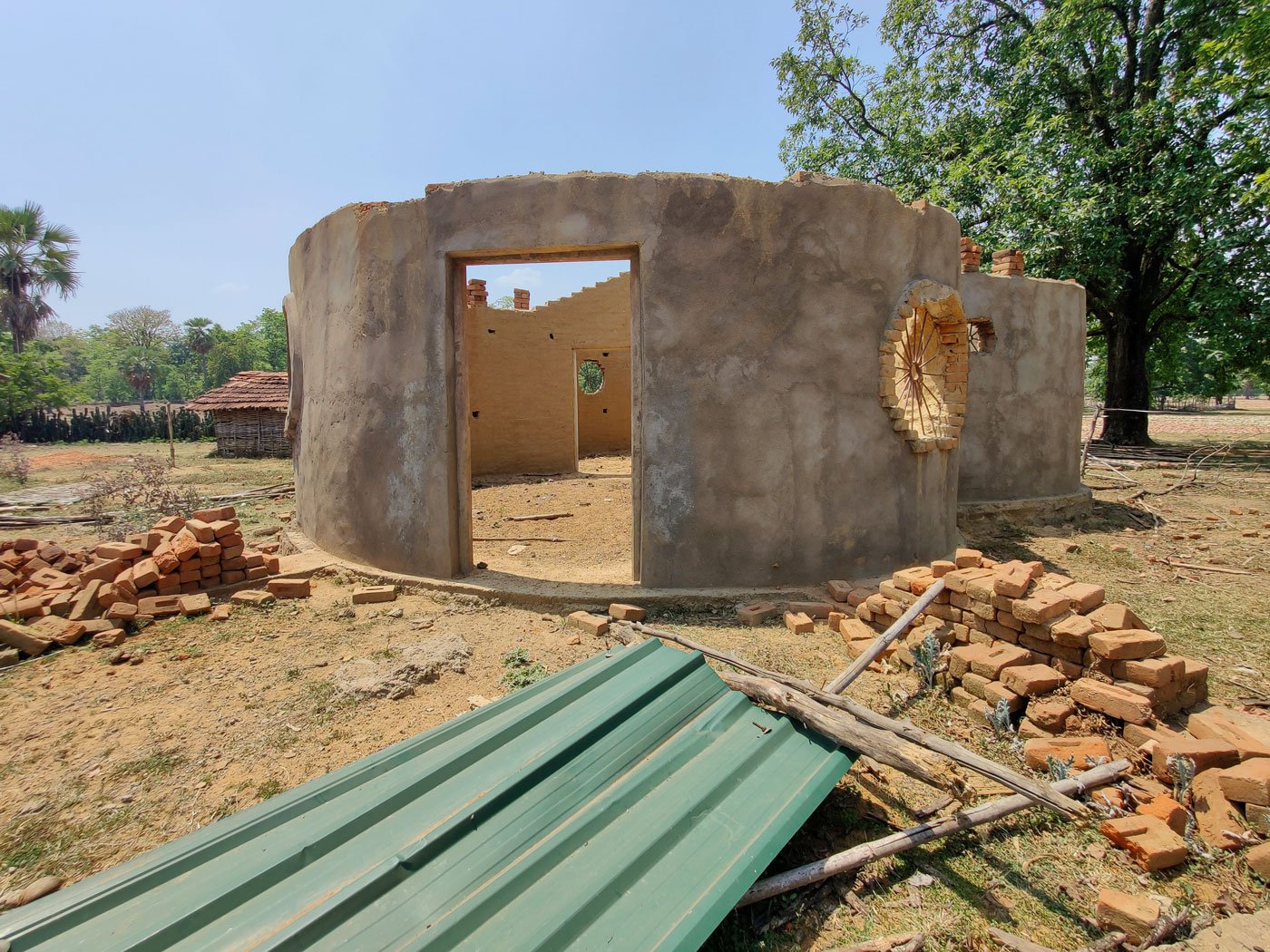
Left: Unlike community-built kurma ghars , the government huts are fitted with windows and ceiling fans. Right: A half-finished government kurma ghar in Krishnar village
As an alternative to the crumbling kurma structures, in 2019 seven ‘houses’ were built by the district administration, says Chavan. Each hut is supposed to accommodate 10 menstruating women at a time. The circular shaped buildings have windows for ventilation; they are meant to have bathrooms and beds, and running water and electricity too.
In June 2022, a government press release stated that 23 ‘women’s rest centres’, or mahila visava kendra , had been constructed in place of kurma ghars in Gadchiroli. Built with assistance from the Centre and technical support of UNICEF Maharashtra, the statement said that 400 centres were being planned by the district administration in the next two years.
But when PARI visited three government-built kurma houses in Bhamragad in May 2023 – in Krishnar, Kiyar and Kumarguda villages – they were found to be half-finished and not inhabitable. CDPO Chavan could not confirm if any of the seven kurma houses were operational, said “It is difficult to say exactly. Yes, the maintenance is poor. I have seen a couple of them in bad condition. In some places, it is incomplete because of lack of funds.”
The question is, how will such an alternative help to eliminate the kurma system? “It needs to be eradicated from the root,” says Samajbandh’s Sachin Asha Subhash. “The government kurma house is not a solution. In a way, it is encouragement.”
Menstrual segregation violates Article 17 of Indian Constitution, which forbids untouchability in any form. In its judgement in the case of Indian Young Lawyers Association vs The State Of Kerala , the Supreme Court said in 2018: “The social exclusion of women, based on menstrual status, is but a form of untouchability which is an anathema to constitutional values. Notions of ‘purity and pollution’, which stigmatize individuals, have no place in a constitutional order.”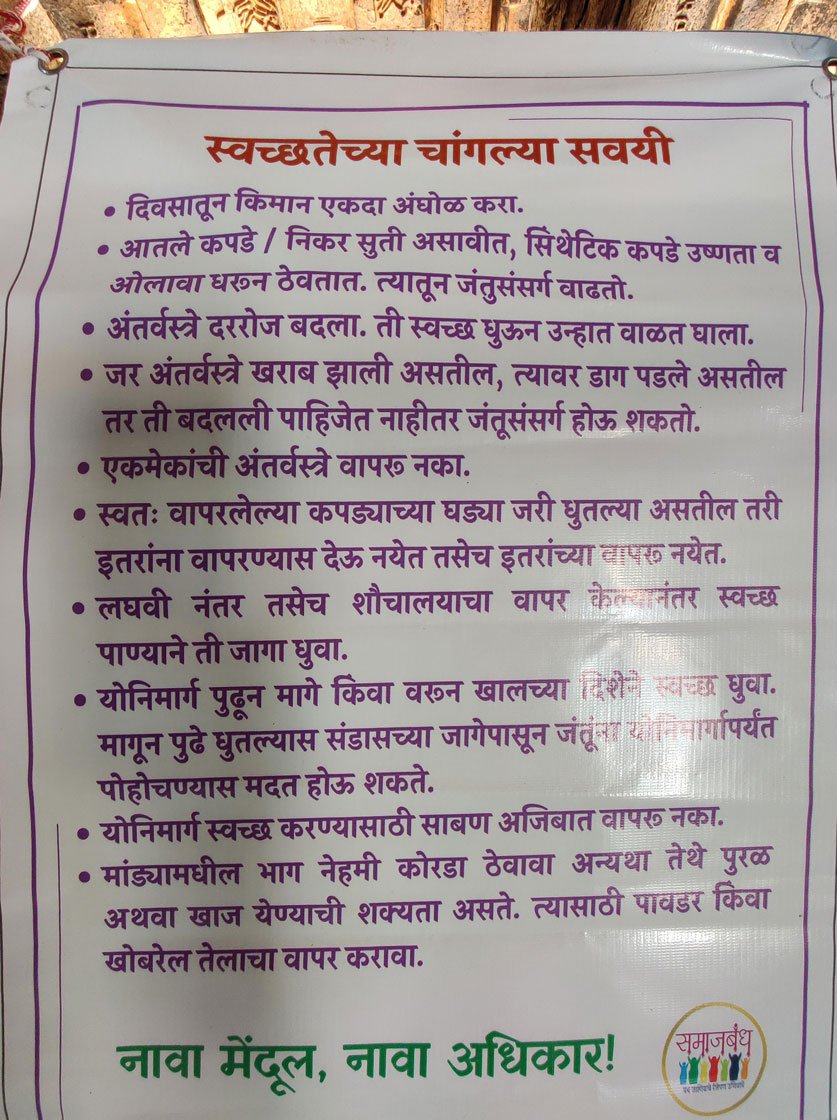
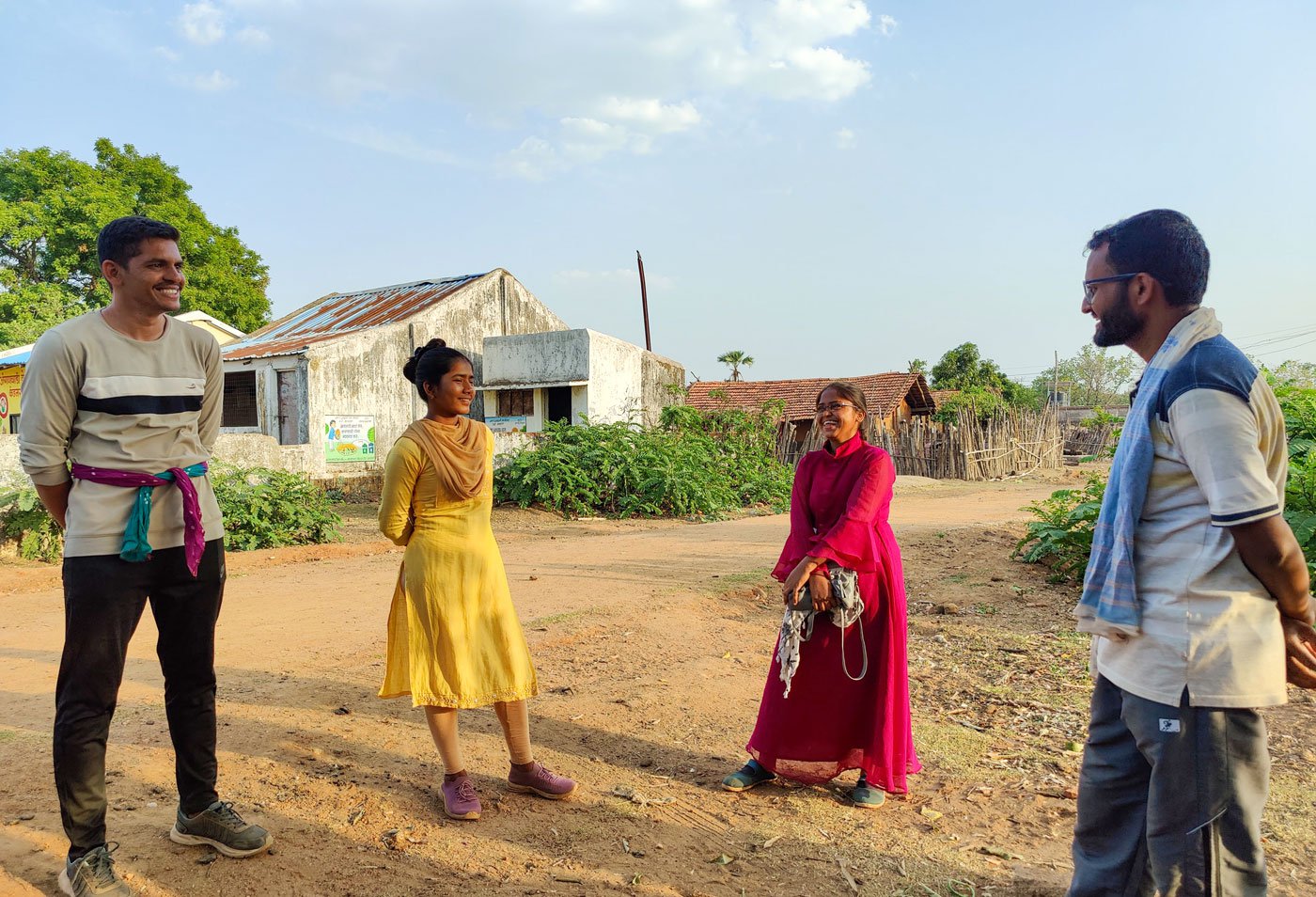
Left: An informative poster on menstrual hygiene care. Right: The team from Pune-based Samajbandh promoting healthy menstrual practices in Gadchiroli district
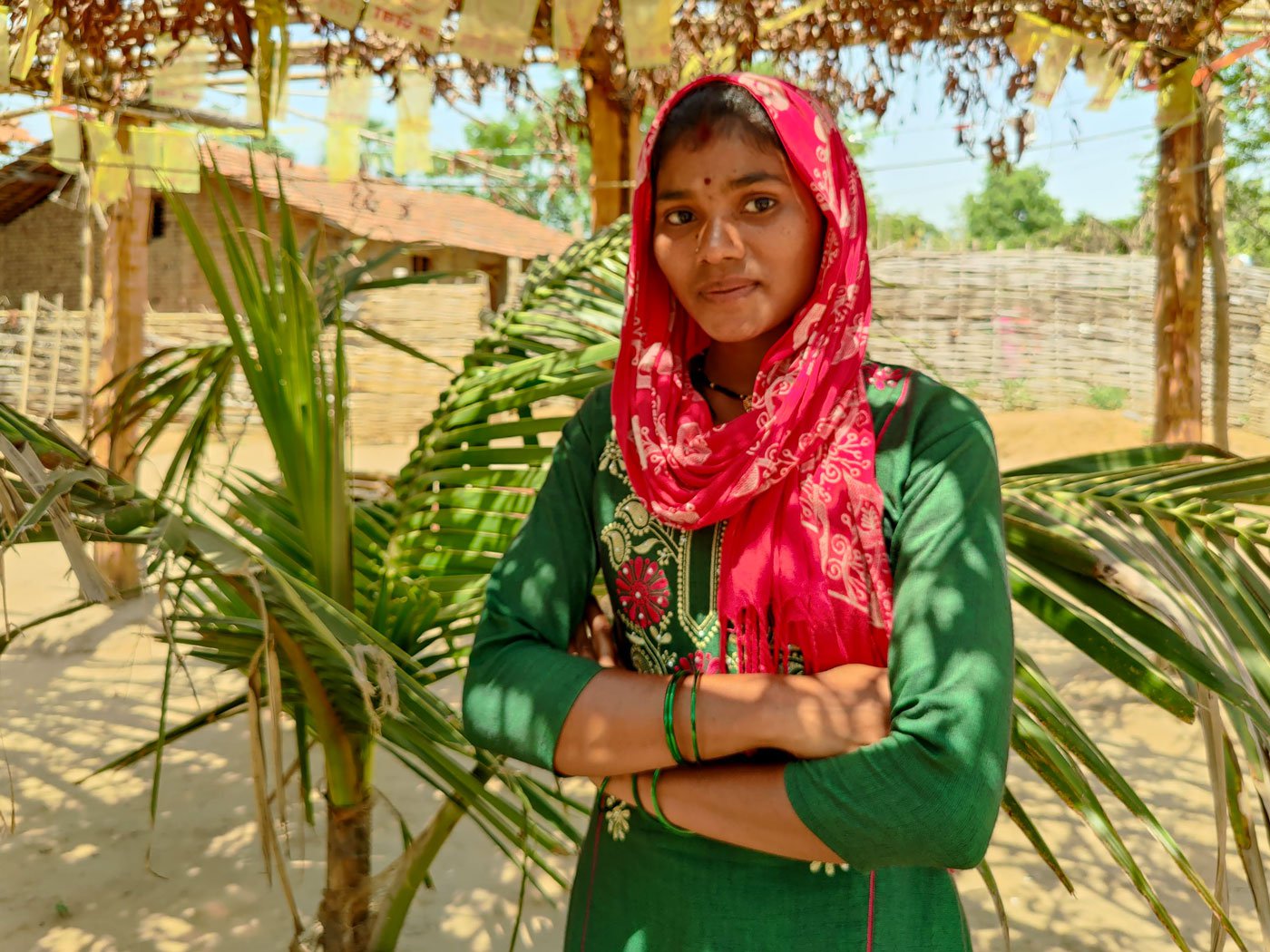
Ashwini Velanje has been fighting the traditional discriminatory practice by refusing to go to the kurma ghar
However, the discriminatory practice survives under patriarchal order.
“This is about god. Our god wants us to follow [the practice], and if we disobey, we will face the consequences,” says Laxman Hoyami, the perma , hereditary head priest, of Golaguda village in Bhamragad taluka . “We will have many problems, and people will suffer losses. Diseases will increase. Our sheep and poultry will die… This is our tradition. We can’t stop following it, and we can’t risk being punished with drought, flood or some other natural disaster. This tradition will always continue…” he adds firmly.
Though many like Hoyami are adamant to continue the kurma system, some young women are determined not to fall in step. Like Ashwini Velanje, 20, from Krishnar village. “I got married on the condition that I won’t follow kurma . It should stop,” says Ashwini, who completed Class 12 in 2021. In March this year, she got married to 22-year-old Ashok only after he accepted the stipulation.
Ashwini had followed the kurma practice since she was 14 years old. “I used to argue with my parents, but they were helpless due to social pressure,” she says. After her wedding, Ashwini spends her period days in the veranda of the house. She continues to fight the system, ignoring all the barbs directed at her family. “I have covered the distance from the kurma ghar to the veranda; soon I will be inside during my periods,” says Ashwini. “I will certainly bring a change in my home.”
